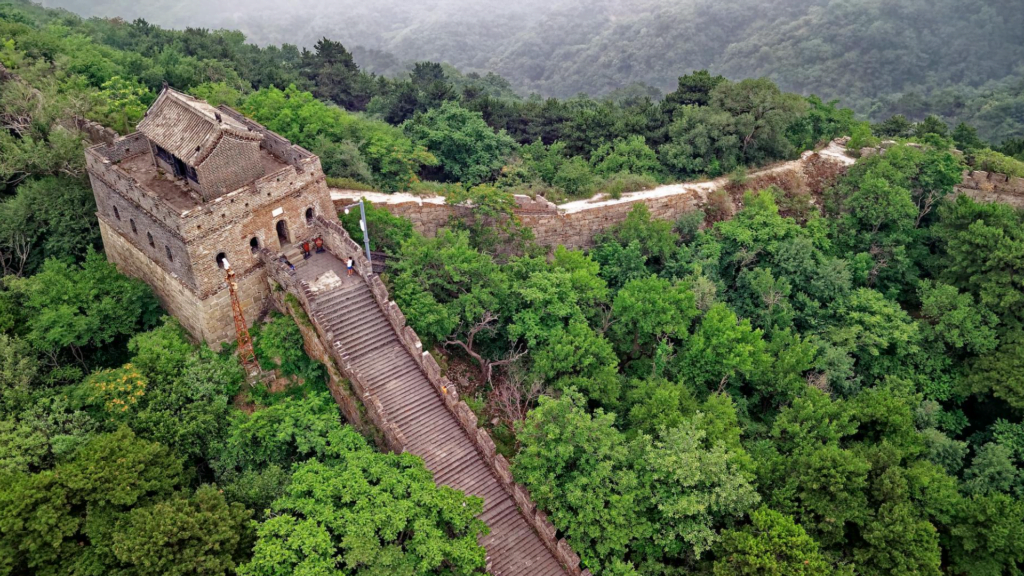Exploring China: A Journey Through the Land of Wonder. China’s landmarks serve as witnesses to its glorious past, picturesque landscapes, and architectural wonders. They range from the magnificent Great Wall to the karst mountains of Guilin, and they are imbued with importance and attraction. In this blog post, we will take an exciting trip to China’s remarkable and highly revered landmarks as I seek to highlight their historical importance and some fantastic stories associated with them.
The Great Wall is a marvel of ancient technology running scores of miles across, with China as the symbol. In between, the magical Forbidden City in Beijing may become a window into the luxury world of the Ming and Qing dynasties, displaying unique splendor architecture that reflects historical deluxe.
We invite you to embark on this fascinating journey with us as we reveal the mystical stories and meanings behind these legendary monuments, better understanding their influence on China’s history.
The Great Wall of China
The Great Wall of China signifies China’s history and culture. Its meaning also has historical, architectural, and tourist dimensions; it has national and international symbolic character.
Historical Significance
The Great Wall of China was constructed throughout several centuries and performed a valuable function as it protected the Chinese states and empires. The construction of this defense was first initiated during the reign of the Qin Dynasty, as it intended to secure the north border against nomadic invaders. The subsequent dynasties reinforced and enhanced the wall to improve its defensive efficiency. The wall was vital in safeguarding the Silk Road exchanges and overseeing border controls, guaranteeing that Chinese lands were secure.
Architectural Marvel
Measuring more than 13,000 miles of mountain, the Great Wall is an impressive architectural feat. Exploring China includes many different building materials, from tamped earth and brick to stone, which reflect the engineering skills of all the dynasties like Qin, Han, and Ming. The location of this wall in rugged territories and steep mountains is a reflection of the brain that the builders dominated, which makes one see ancient Chinese engineering techniques.
Impact on Tourism
Millions of visitors visit the Great Wall of China every year. It is a world-famous symbol that is vital in boosting local development. Its cultural importance and grandeur attract tourists to admire its splendid views, which give a feeling of unknown history. The attraction of the wall has promoted the development of local tourism infrastructure, employment opportunities, and economic prosperity in some surrounding areas.

Exploring China The Forbidden City
The Forbidden City, also known as the Imperial Palace, remains an enduring representation of the wealthy past and architectural genius associated with China’s imperial history. Let us look at its historical heritage, architectural majesty, and cultural status.
Historical Legacy
Historical Legacy
The Forbidden City functioned as the imperial palace for more than 500 years, during which it was occupied by Chinese emperors from the Ming Dynasty to the end of the Qing Dynasty. Dynasties rose and fell, China’s governance was established, and even historical events passed through it because it was a political and ceremonial center for an empire. This colossal structure proudly bears an unequaled historical significance, representing a palpable connection to China’s illustrious imperial heritage.
Architectural Grandeur
Traditional Chinese architecture in the Forbidden City is full of detailed planning and symbolic design, as evidenced by its grandeur. The design, which involves a symmetrical setup in large halls connected by expansive courtyards, expresses what Chinese culture revered for: harmony and balance. From intricate carvings to vibrant colors, every detail showcases the skill and meaning behind its creation, making it a masterpiece.
Cultural Symbolism
The Forbidden City has a rich culture and symbolic significance rooted in Chinese history. It is the culmination of traditional Chinese achievement in architecture and art, reflecting philosophical and spiritual values. With its more profound legacy that continues to shape the fabric of modern Chinese culture, it is nothing but a reminder of how great and spirited this country was.
The Terracotta Army
The Terracotta Army showcases ancient Chinese art with life-sized clay soldiers, chariots, and horses standing proudly. It is time to examine this magnificent monument’s historical, artistic, and archaeological majesties.
Exploring China’s Historical Unveiling
In 1974, Chinese farmers in Xi’an made a significant archaeological discovery. The Terracotta Army remained buried for over 2000 years to protect Emperor Qin Shi Huang in the afterlife. Each character warrior is based on individual faces and armor features depicting the power of Qin Dynasty armies.
Exploring China’s Artistic and Cultural Value
Besides representing the fantastic ability of ancient Chinese sculptors, The Terracotta Army also depicts their arms and military skills. Each warrior has their appearance, haircut, and outfit, reflecting the ultimate qualities of creators. The army described here gives us a clear picture of the essence and beauty of warfare in ancient China.
Exploring China’s Archaeological Impact
The finding of the Terracotta Army has revolutionized people’s perception of ancient China. As excavations continue, new knowledge concerning the political hierarchy of the Qin Dynasty’s social and military infrastructure is unveiled. The site has also become a center of attraction for archaeologists and historians, as each represents a significant civilization in this world.
The Terracotta Army symbolizes China’s rich history and connects us to ancient human stories.
Conclusion
The iconic landmarks of Exploring China represent its rich culture and grandeur to billions. The stunning Great Wall and serene Guilin reflect China’s rich heritage.
A wonderful experience is to swim in the luxury of these precious sites. Visiting the Great Wall or gazing at Huangshan’s peaks is indescribable. Travel and explore history’s wonders.
Why read about these remarkable landmarks? Use this chance to start a journey that will make your soul more prosperous and open new horizons. Now’s the time to enjoy China’s famous landmarks and capture your memories with its majestic monuments.




4 Comments